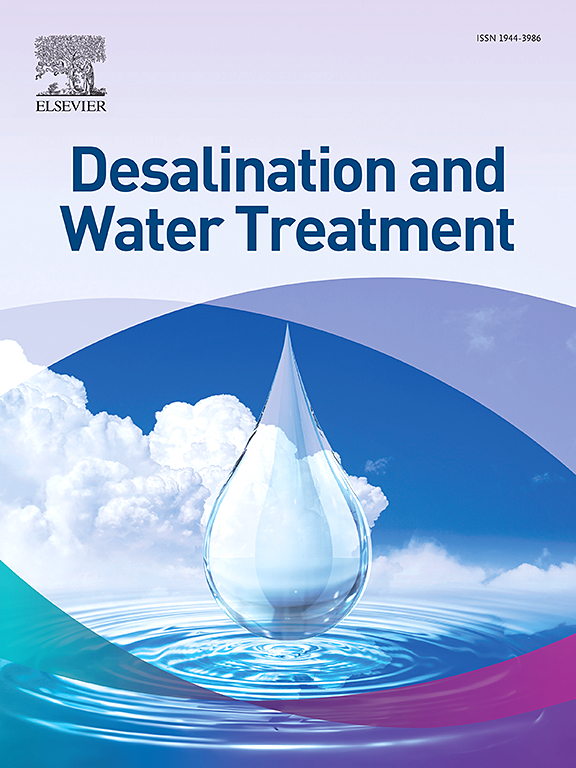氧化石墨烯-氧化镁复合材料的合成及水中阳离子染料的脱除
IF 1
4区 工程技术
Q4 ENGINEERING, CHEMICAL
引用次数: 0
摘要
本文章由计算机程序翻译,如有差异,请以英文原文为准。
Synthesis of graphene oxide–magnesium oxide composites and cationic dyes removal from water
Herein, graphene oxide (GO)–magnesium oxide (MgO) nanocomposites (GO-MgO) (GO1.5MgO, GO3MgO, GO4.5MgO, and GO6MgO) were synthesized and characterized. Methylene blue (MB) and crystal violet (CV) as cationic dyes were used as contaminants. The results showed that MB and CV adsorption followed pseudo-second-order kinetics. The isotherm data indicated that MB and CV removal obeyed the Langmuir isotherm model. It means that the adsorption process was carried out in specific homogeneous sites on the adsorbent surface. The adsorption thermodynamic data presented that the negative Δ G of CV and MB removal by the synthesized adsorbents presented physical and spontaneous adsorption. Also, the positive values of Δ H and Δ S showed the endothermic properties of adsorption and the increase of dye irregularity on the adsorbent surface. The amount of dye adsorbed on the synthesized adsorbents increases by increasing the contaminant concentration. The results indicated that contaminant adsorption capacity enhances by enhancing the adsor-bent dose and then decreases to some extent. As the adsorbent dose increases, the active sites will be more accessible. The adsorbent particles are agglomerated at values higher than the optimal value of the adsorbent dose. Thus dye removal is reduced. It can be concluded that the synthesized GO-MgO nanocomposites could be used as alternative adsorbents to remove cationic dyes.
求助全文
通过发布文献求助,成功后即可免费获取论文全文。
去求助
来源期刊

Desalination and Water Treatment
工程技术-工程:化工
CiteScore
2.20
自引率
9.10%
发文量
0
审稿时长
5.3 months
期刊介绍:
The journal is dedicated to research and application of desalination technology, environment and energy considerations, integrated water management, water reuse, wastewater and related topics.
 求助内容:
求助内容: 应助结果提醒方式:
应助结果提醒方式:


